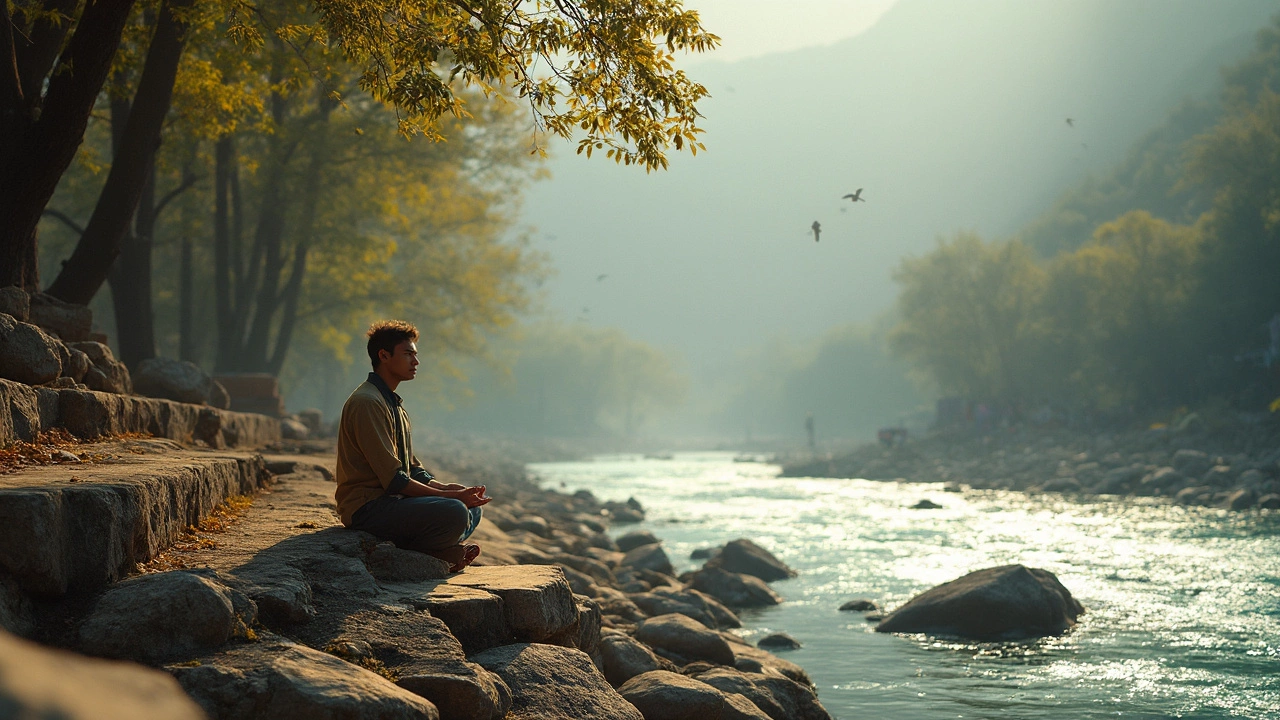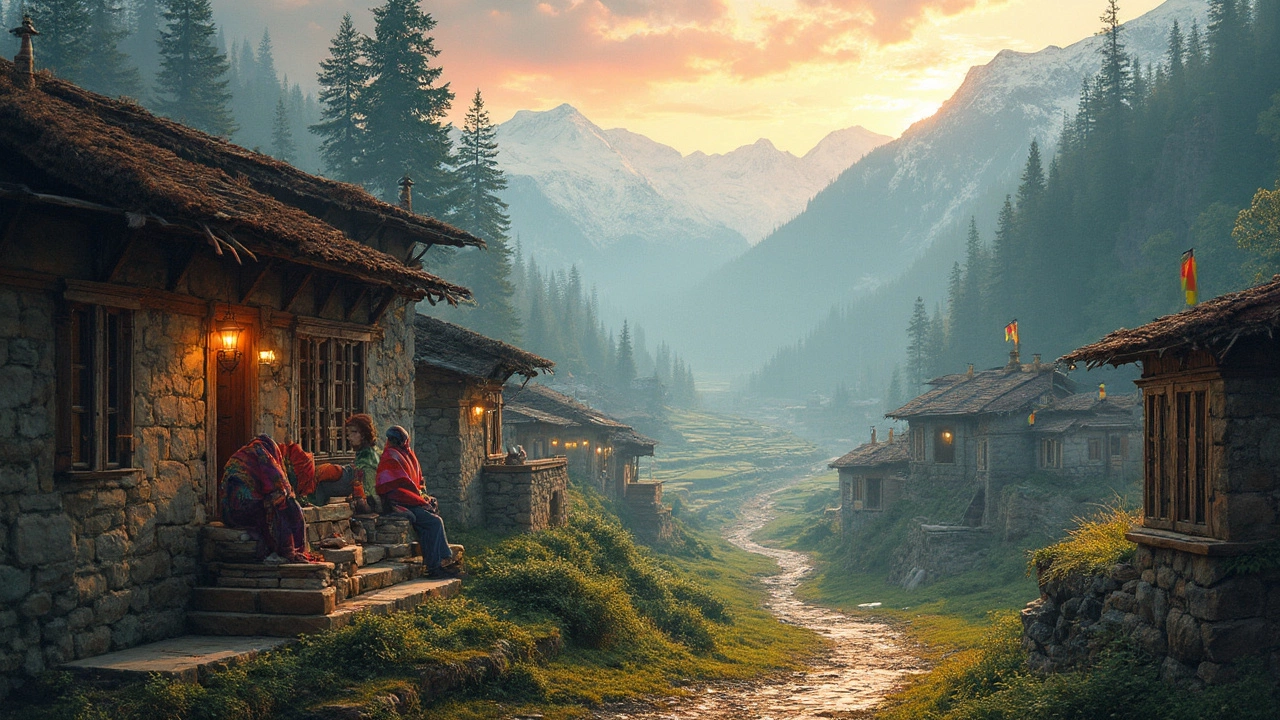Ask any traveler who’s bounced between honking rickshaws and selfie-stick crowds: real peace is rare in North India. You get bursts of quiet in an early-morning ghat or with the right playlist on a mountain train, but finding a spot that feels truly untouched? That’s something else entirely.
Funny thing is, most tourists flock to the same "peaceful" spots—think Rishikesh’s yoga camps or the Dalai Lama’s HQ in McLeod Ganj. But, the relentless buzz follows you. Want something actually quiet? You need to go further off the grid.
Spiti Valley, tucked high in Himachal Pradesh, doesn’t just promise calm—it delivers on every front. Low population, no phone signal in half the villages, mountains all around, and nights so still you can hear your heartbeat. If you’re looking to ditch the rush for a few days, this is where you want to be. But, Spiti isn’t a "quick escape"—getting there takes effort, but that’s why hardly anyone does.
- Why It's So Hard to Find Peace in North India
- What Makes Spiti Valley Stand Out
- The Real Experience: What You’ll Discover There
- How to Plan Your Own Quiet Trip
Why It's So Hard to Find Peace in North India
When people picture North India, they imagine snow-capped peaks or rivers flowing through valleys. In reality, most spots on the tourist map get crowded. Delhi alone has about 33 million people squeezing into one city. Add millions of travelers every year and you get an idea why it's noisy almost everywhere.
Roads leading to hill stations like Manali and Shimla turn into bumper-to-bumper parking lots during summer breaks. Train stations feel like waiting in line for concert tickets. Big attractions such as the Golden Temple, Taj Mahal, and Rishikesh’s ghats see up to 80,000 visitors peaceful places North India on peak days. Even so-called "hidden gems" go viral on Instagram, and suddenly everybody and their cousin is planning a trip.
Check this out—the table below shows visitor numbers at some popular North Indian spots in 2023:
| Location | Estimated Visitors (Annual) |
|---|---|
| Golden Temple, Amritsar | Over 35 million |
| Taj Mahal, Agra | 7-8 million |
| Manali | 4 million |
| Rishikesh | 2.5 million |
The other thing people forget: even in smaller towns, daily life is loud. Think wedding bands, religious ceremonies, shopkeepers haggling, and buses honking at odd hours—it just comes with the vibe. Finding actual quiet means going way beyond typical tourist stops. If you don’t plan for that, you’ll probably leave just as frazzled as when you arrived.
What Makes Spiti Valley Stand Out
Spiti Valley isn’t just another mountain escape—it’s almost like a different world. Sitting at an average altitude of 12,500 feet, the valley stays cut off from the rest of the country for most of the winter. No wonder tourists call it the "Middle Land" between India and Tibet. The thin air, long stretches without cell signal, and dramatic views make you instantly slow down. If your idea of the peaceful places North India offers is all about unplugging, Spiti completely nails it.
Here’s what makes Spiti totally different from anywhere else in the north:
- No Big Crowds: Unlike Shimla or Manali, Spiti sees only a small trickle of visitors outside peak summer months. Even in tourist spots like Kaza or Key Monastery, you might find yourself alone for hours.
- Total Disconnection: WiFi is patchy and mobile coverage is almost nonexistent in most villages. If you want a break from endless notifications, you won’t even need to try—tech simply doesn’t follow you here.
- Monasteries in Silence: Spiti is packed with old monasteries, like Tabo (over 1,000 years old) and Dhankar, perched right on the edge of cliffs. Monks go about their day quietly and are happy to let you just sit and soak it all in. Some even allow travelers to stay overnight for the full experience.
- No Constant Soundtrack: Forget city noise. You hear wind, water, and once in a while, a shepherd’s call. At night, you get crazy-clear stargazing—locals joke there are more stars here than people.
- Local Hospitality: Family-run homestays are everywhere. They offer warm food, strong tea, and real Spitian hospitality. Learn to make momos, try yak butter tea, and swap stories by the fire—it’s simple, genuine, and super peaceful.
Just being here changes your pace. Most people end up staying longer than they planned, just because it’s that easy to relax. The time you spend in Spiti isn’t measured by the clock, but by moments you actually notice. That’s not something most travel destinations can promise.

The Real Experience: What You’ll Discover There
The first thing you notice in Spiti Valley is just how quiet it gets. It’s so silent that the crunch of your boots on gravel or the wind ruffling your jacket sounds almost too loud. The villages—like Kaza, Dhankar, and Kibber—are tiny. You’ll meet locals who actually have time to chat, and most guesthouses have only a handful of rooms.
The landscape is wild. Giant rock faces, cold rivers, and old monasteries perched on hills look like movie sets, but this is real life here. The air is thin but fresh, since you’re way above 12,000 feet most of the time. Nights are chilly, but the upside is sky-full-of-stars views you just don’t get in the cities.
One unique thing? There’s little to no mobile network in a lot of villages. Expect simple living. No blaring TVs, hardly any traffic, and dinner is whatever the kitchen’s cooked up—often using vegetables grown in the backyard or cheese made from local yak milk. If you want a break from screens, this is your shot.
People think of Spiti as tough to reach—it’s true—but that’s the point. Only about 15,000 tourists make it each summer. Compare that to Shimla, which gets over 3 million. This means you can wander ancient monasteries (like Key Gompa) and sometimes have the spaces to yourself. If you like photography, you’ll be obsessed with the almost-constant golden hour light bouncing off the mountains.
- Hikes to nearby lakes like Chandratal are popular, but you can go totally solo and just listen to nature for hours.
- Home-stays will often invite you to help with chores—milking a cow, baking Tibetan bread, or even showing you how to light a traditional stove.
- Visiting in winter? You can see villages close up for months—locals rely on each other, and sometimes you’re the only guest for miles.
If you love numbers, check this out: Spiti Valley sits at 4,270 meters (Kaza town). Pollution levels are so low they’re almost not measured. Days are sunny—over 250 clear days a year—and summer high temperatures hover around 15°C (59°F). Here’s a direct comparison for peaceful places North India:
| Place | Average Summer Tourists (per month) | Mobile Coverage | Noise Level (dB) |
|---|---|---|---|
| Spiti Valley | 2,500 | Low/None | 25-35 |
| Rishikesh | 80,000 | Good | 50-65 |
| Shimla | 400,000 | Strong | 50-70 |
This isn’t just a place for bragging rights or Instagram. You slow down, breathe easy, and start noticing things you’d miss anywhere else. That’s the real heart of Spiti.
How to Plan Your Own Quiet Trip
Getting to Spiti Valley isn't as simple as hopping on a quick bus. That’s kind of the point—peaceful places in North India are tucked far from the big highways and noisy towns for a reason. Here’s how you can actually do it without losing your mind (or your wallet).
- Time Your Visit Smartly: Spiti is open about six months a year, usually May to mid-October. Snow blocks both main routes (from Shimla and Manali) for the rest. Avoid national holidays—Indian long weekends turn peaceful Spiti into a mini festival.
- Choose Your Route: The Manali–Spiti route opens late due to high passes but gets you there fastest (about 12 hours, if weather’s kind). The Shimla route takes at least two days but rises slower, which helps you avoid altitude sickness.
- Book Stays with a Local Touch: Ditch the few big hotels. Homestays in villages like Kaza, Kibber, or Langza aren’t just quieter—they give you warm food and local stories. They’re cheaper too, and the low broadband (or no signal at all) helps you disconnect for real.
- Pack Right: Nights drop below 5°C even in July; days are dry and sunny. Pack layers, sunscreen, refillable water bottles, and cash. There’s only one working ATM in Kaza and it runs out of money regularly.
- Go Slow: Spiti sits above 3,800 meters. Your lungs will thank you for skipping the hero ICS (I-can-see-it-all) schedule. Stay two nights in Kaza before heading to higher villages or treks.
Pro tip: If you want a special experience, stick around for a local festival. The Chham masked dances at Key Monastery are wild and very few outsiders see them. Just ask your homestay host if anything’s coming up. Getting off the main path is how you make this trip your own—and keep it peaceful.
